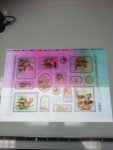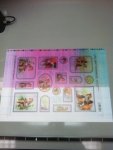Disappointed
Well-known member
In connection with my other topics here..
http://printplanet.com/forums/sheetfed-web-offset-discussion/30330-presstek-52di-info-sought
And here...
http://printplanet.com/forums/sheetfed-web-offset-discussion/30424-presstek-52di-users-please
I am looking for assistance from other waterless offset users, specifically with plate cylinder temperatures.
We have an issue presently that is badly affecting the start of each run by serious toning in the cyan followed by yellow and magenta. This ONLY affects the start of a new set of plates, never during a run so its not the usual toning effect. I have ruled out the ink now as the manufacturer has assured me that the formulation has not changed in several years and this issue has only started in the last six months or so. We have used the same inks and roller temperatures for over two years.
Recently I have been monitoring all aspects of the system in order to get a hand on what is going on here. One area i have found slightly concerning is plate cylinder temperature, this can go from room temp of 16c in the morning to over 34c by about 2pm, this seems a serious rise to me and is well above toning temps as far as I know. Toning starts at around 25c or mid-morning.
The press has cooled rollers and duct and these are set at 18c. Rollers surfaces run at 19-20c when moving. Blanket surface was 36c when the plate was at 34c.
Roller pressures are meticulously set (especially so lately) at 3mm stripe, blankets are never over-packed so where does the heat come from?? There is no sideways movement on the forme rollers and we have fitted two units with new ones but no change.
Any thoughts?
http://printplanet.com/forums/sheetfed-web-offset-discussion/30330-presstek-52di-info-sought
And here...
http://printplanet.com/forums/sheetfed-web-offset-discussion/30424-presstek-52di-users-please
I am looking for assistance from other waterless offset users, specifically with plate cylinder temperatures.
We have an issue presently that is badly affecting the start of each run by serious toning in the cyan followed by yellow and magenta. This ONLY affects the start of a new set of plates, never during a run so its not the usual toning effect. I have ruled out the ink now as the manufacturer has assured me that the formulation has not changed in several years and this issue has only started in the last six months or so. We have used the same inks and roller temperatures for over two years.
Recently I have been monitoring all aspects of the system in order to get a hand on what is going on here. One area i have found slightly concerning is plate cylinder temperature, this can go from room temp of 16c in the morning to over 34c by about 2pm, this seems a serious rise to me and is well above toning temps as far as I know. Toning starts at around 25c or mid-morning.
The press has cooled rollers and duct and these are set at 18c. Rollers surfaces run at 19-20c when moving. Blanket surface was 36c when the plate was at 34c.
Roller pressures are meticulously set (especially so lately) at 3mm stripe, blankets are never over-packed so where does the heat come from?? There is no sideways movement on the forme rollers and we have fitted two units with new ones but no change.
Any thoughts?













